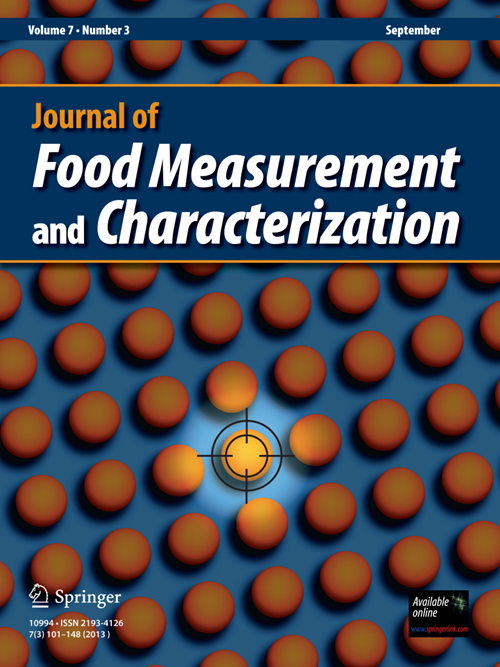何时以及如何将低酰基结冷胶添加到蛋白质混合物中以改善肉类类似物的质地?
IF 3.3
3区 农林科学
Q1 Engineering
Journal of Food Measurement and Characterization
Pub Date : 2023-09-25
DOI:10.1007/s11694-023-02137-7
引用次数: 1
摘要
在蛋白质共混物中添加水胶体可以改善经加热和剪切形成的产品结构的形成,因此在开发更好的肉类类似物方面具有重要价值。在剪切和加热形成过程中,研究了添加一种特定的水胶体和使用氯化钙(cacl2)作为固化剂对豌豆分离蛋白(PPI)和小麦面筋混合物(WG)(比例为1:1,wt%)的宏观结构、微观结构和力学性能的影响。低酰基结冷胶的加入显示出更好的内部结构,如取向纤维性,但只有当低酰基结冷胶与WG一起加入时,PPI首先在cacl2溶液中水化。在平行和垂直剪切方向上,材料的强度和韧性都显著提高。添加顺序的影响表明,在加热和剪切过程中,不同组分之间的相互作用是不平衡的,因此初始面团的制备过程与加热和剪切过程本身的组成和设置一样重要。本文章由计算机程序翻译,如有差异,请以英文原文为准。
When and how should low acyl gellan gum be added to the protein blends to improve meat analogue texture?
Abstract The addition of hydrocolloids to protein blends may improve the formation of structure of products formed upon heating and shearing, and thus could be valuable in developing better meat analogues. In this study, the effects of adding one particular hydrocolloid, and the use of calcium chloride (CaCl 2 ) as a solidifying agent were evaluated on the macrostructure, microstructure, and the mechanical properties of pea protein isolate (PPI) and wheat gluten blends (WG) (ratio 1:1, 40 wt%), when using shearing and heating as formation process. The addition of low acyl gellan gum was shown to result in better internal structure, such as oriented fibrousness, but only when the low acyl gellan gum was added together with the WG after first allowing hydration of the PPI in a CaCl 2 solution. The material was markedly stronger and tougher both parallel and perpendicular to the shearing direction. The influence of the sequence of addition indicates that the interactions between the different components before and during heating and shearing are non-equilibrium and that therefore the preparation procedure of the initial dough is just as important as the composition and the settings of the heating and shearing process itself.
求助全文
通过发布文献求助,成功后即可免费获取论文全文。
去求助
来源期刊

Journal of Food Measurement and Characterization
FOOD SCIENCE & TECHNOLOGY-
CiteScore
5.30
自引率
11.80%
发文量
0
期刊介绍:
This interdisciplinary journal publishes new measurement results, characteristic properties, differentiating patterns, measurement methods and procedures for such purposes as food process innovation, product development, quality control, and safety assurance.
The journal encompasses all topics related to food property measurement and characterization, including all types of measured properties of food and food materials, features and patterns, measurement principles and techniques, development and evaluation of technologies, novel uses and applications, and industrial implementation of systems and procedures.
 求助内容:
求助内容: 应助结果提醒方式:
应助结果提醒方式:


